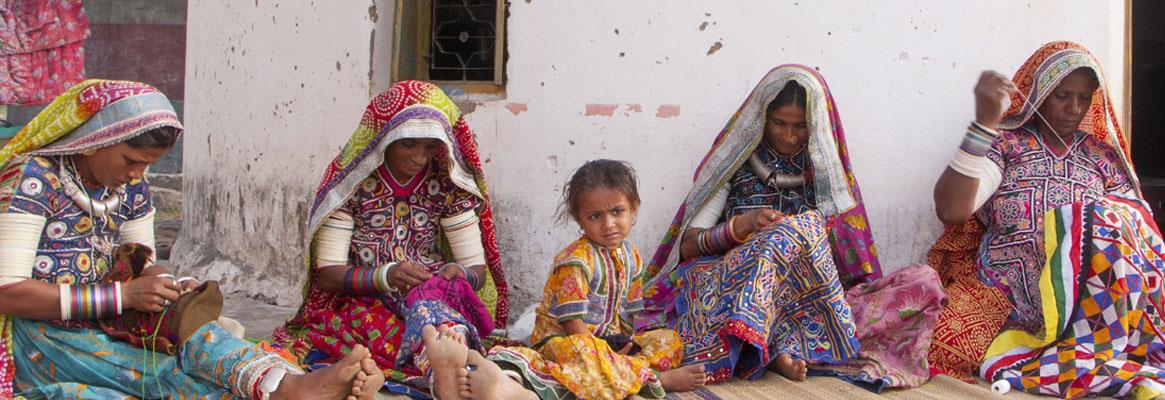The precipitous drop in retail spending coupled with the exodus of workers from the cities and towns has all but brought the economy to its knees. Kickstarting it would take some doing, but there are ways of doing it. One would be to take manufacturing to the villages.
Distributed marketing is a term that many may not fully understand. But it is becoming a mantra for many, especially those looking for a sustainable retail business model. Understanding whether a company uses distributed marketing strategies or not can save marketers time, money and effort when searching for solutions to brand marketing challenges.
There is one definite lesson for industry in this pandemic situation: do not work with large factories, and do not depend only on exports for business. Several billion worth of shipments are now stuck, and exporters are in a quandary. Yet, this not an end but, rather, the beginning of the distributed marketing which can kickstart business all over again.
Let’s take an example to see how it works. V-Guard Industries Limited, based in Kochi, is a multi-product company catering to the mass consumption market. The company’s product range in the electronics segment includes stabilisers, UPS and solar inverters. It holds a leadership position in its flagship voltage stabilisers segment with over 51 per cent market share. It has other products in the electrical and consumer durables segments. V-Guard outsources 60 per cent of its product portfolio while the rest are manufactured in-house. This company started this model through distributed marketing by involving thousands of self-help women’s groups to assemble and test their products and collect them for distribution through their network. The company has a strong nationwide distribution network of 29 branches, 624 distributors, 5,562 channel partners and over 25,000 retailers. The foundation of V-Guard Industries was laid through the formation of a partnership concern— Premiere Electronics—by Kochouseph Chittilappilly in 1977. It was engaged in the business of manufacturing and marketing voltage stabilisers under the brand name V-Guard.

There is a lesson here. If brand marketers are not able to accurately identify their company’s strategy as one that includes distributed marketing, they may not be able to find leading solutions that meet their company’s unique needs. There is no need to go any further.
This can very well be transposed to the apparel sector which does not need huge factories to produce. Instead, clusters can consist of self-help women’s groups who will be owners and workers themselves and they would be dependable for delivering products on time. All that a cluster will require would be common facility centres that can procure fabrics, cut and offering bundles to be stitched and packed at the cluster production centres housing 40 machines each. V-Guard has shown the way, and all we need is to replicate the model to build a strong domestic label and brand.
The distribution way
Many companies, brands and manufacturers have business relationships with a vast number of partners, resellers, agents, retailers, distributors, dealers, franchisees or branches that sell brand products in local markets. And that distributed network structure may be organised in various ways—by region, class, tier or partner. Companies or brands that have such a structure are, in fact, distributed organisations. However, if a company or brand has only one location or a small number of locations that do not sell brand products through a network of local channel partners, then such a company does not fit the definition of a distributed organisation.
Distributed marketing, therefore, refers to the process of national-to-local marketing for brands that sell their products or services through networks of local partners. Distributed marketing encompasses all aspects of aligning marketing strategies, creating marketing campaigns and assets, and managing the local setup. Distributed marketing—also referred to by many as channel marketing—involves both digital marketing technology and traditional marketing (radio, TV, newspaper, outdoor advertising and direct mail) with customised local marketing campaigns and assets that deliver co-branded messaging to local markets.

The setup is already there
The country need not bother about migrants and where to find them for working in factories once again. Instead, it can reach out to them in the villages that they have returned to. The government can create clusters, provide machines through Mudra loans, organise them into self-help groups and impart basic training to become entrepreneurs. The workers can be adopted, nurtured and settled amidst their own people. Make this a national movement so as to employ them skilfully and make them feel proud of their skills. Not just apparel, it can be applied to other sectors too. The Abdul Kalam model of PURA (Providing Urban Amenities in Rural Areas) will become a reality.
All over South India, there are very strong self-help women’s groups already in place. There’s the Kudumbashree initiative in Kerala, the Development of Women and Children in Rural Areas (DWCRA) in Andhra Pradesh and the Stree Shakti programme in Karnataka.
Kerala has been very progressive in many areas and Kudumbashree is known to be a model for women’s empowerment. Soon, the country might want to replicate this model. Large retail chains that have a corporate social responsibility programme can adopt these self-help groups to create their own in-house labels.
This article was first published in the September 2020 edition of the print magazine.







Comments